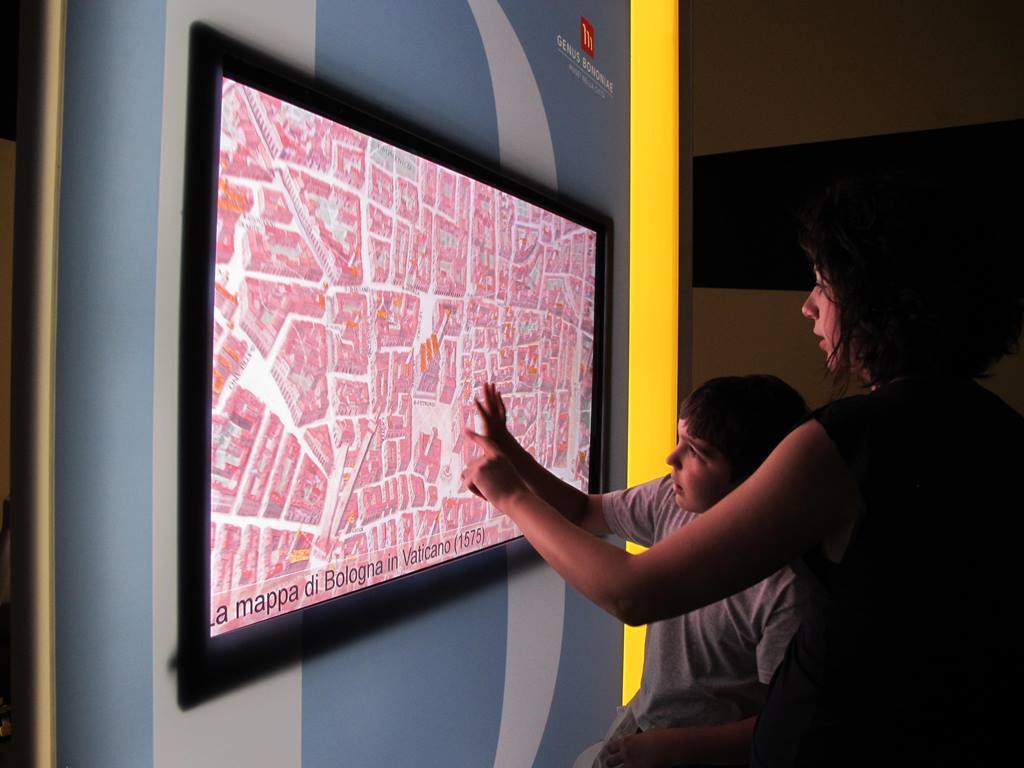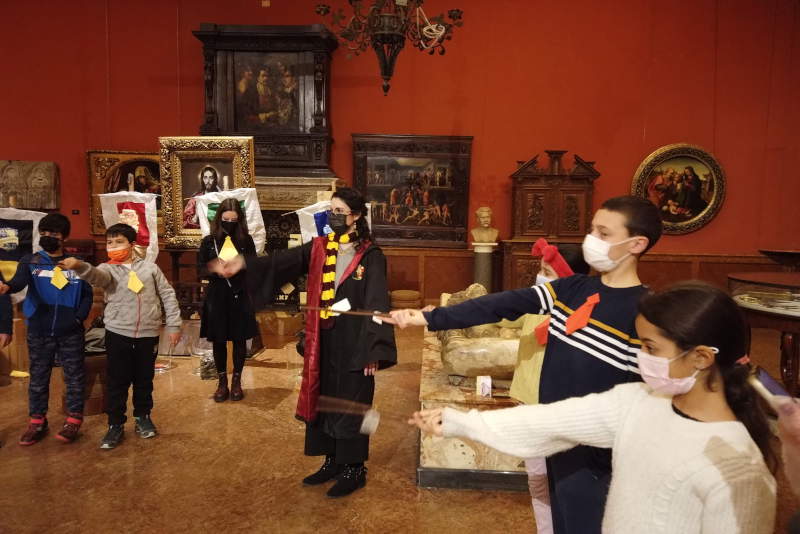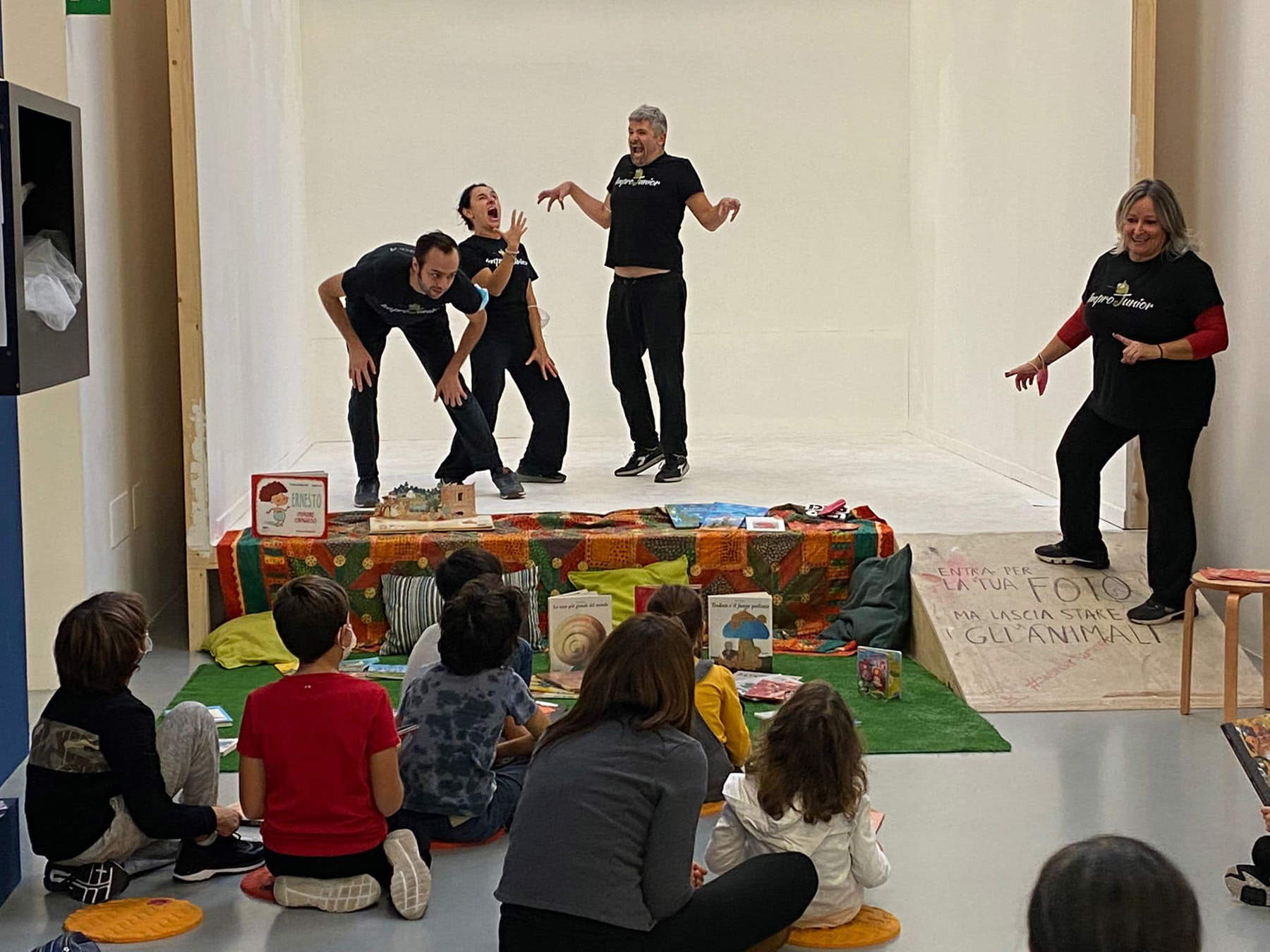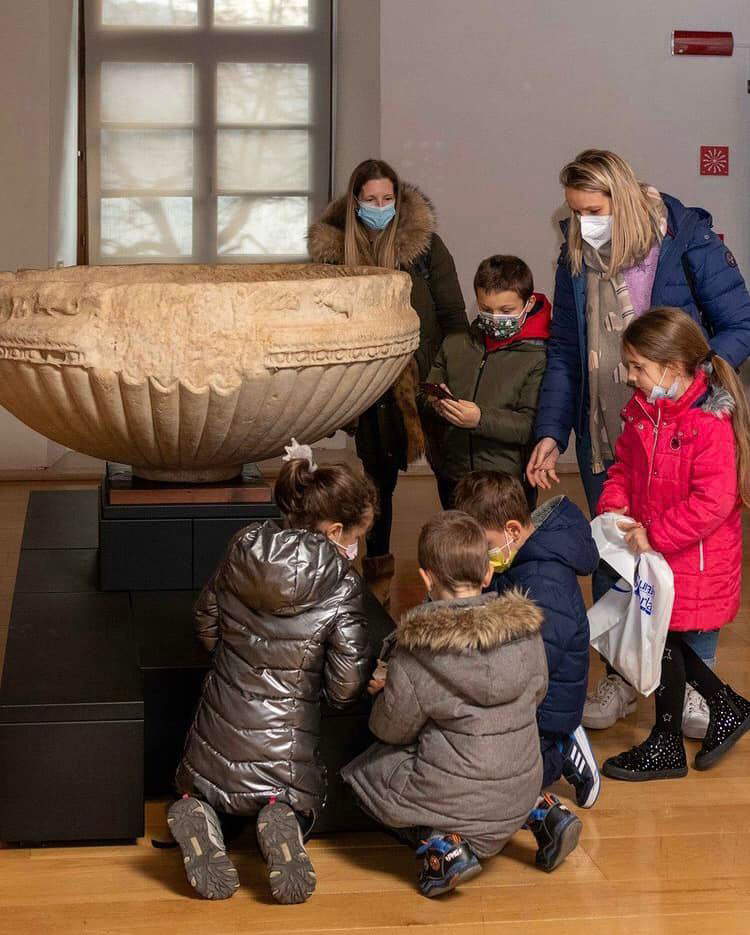It is an issue that no one or few are talking about, but it is causing significant problems for museums across Italy: the collapse of school visits to museums and the backlash on the museum education sector caused by the Covid-19 pandemic. Indeed, the spread of the disease and the restrictive measures have also had repercussions on this part of the museum landscape, which remains more hidden to those who sporadically frequent museums, but which moves a world that balances on a rather delicate equilibrium and which the spread of the contagion, and the measures put in place to curb it, threaten to throw off. Schoolchildren’s visits mean an important source of revenue for museums, they mean work for educators (who in the absence of schoolchildren in many cases therefore see the volume of their activities drastically reduced), and above all they mean so many opportunities for growth and knowledge for children, youth and young people that can never be recovered, unless we do as many do, who replace museum visits and participation in workshops with remote activities, and which in any case are certainly not the same thing as in-person visits.
With Covid, the school field trip, an extraordinary time of education and growth, by which we all not only deepened our education but began to look forward to life, is in danger of becoming, unfortunately, a thing of the past. There are many schools that have cut them back, for example, giving up multi-day trips and rescheduling with single-day excursions, while there are also those who have completely given up educational outings. Others, on the other hand, are counting pupils, establishing percentages of pupils below which they will not go. The situation, in short, is complicated.


For field trips and educational outings there is really only one rule: they can only be done in the white zone, and staying within white zone territories. At the time of writing, for example, a class from Perugia can go on a field trip to Assisi or Spoleto but not to Florence or Rome, since Umbria is in the white zone and all the regions surrounding it are in yellow instead. But there is not only the problem of rules for schools, because there is also the unknown Super Green Pass, which affects the entire school population over the age of 12 and is now required practically everywhere, with the result that students who do not have it are automatically cut off: a visit to a museum, or even simply a high-speed train ride or lunch at a restaurant, is enough to exclude children who have not been vaccinated.
So how do schools react to this situation? There are many institutions that have abolished field trips, and there are several reasons for this. There is, meanwhile, the unknown of the zone system: you schedule a field trip to a place in a white zone with the risk of seeing it later turn into yellow or orange and blow the trip. It is like taking a gamble, in short: who’s up for it? Then there are institutes, as the specialized journal Orizzonte Scuola reports, that forgo trips so as not to discriminate against students: it happened in Bologna, where this choice was made so as not to create problems for unvaccinated children. Others, however, decide to go for the opposite reason, namely not to deprive the majority of the class of an outing. And the Ministry of Education is being vague: in its FAQs on activities for students for which Green Pass is provided, it refers to an opinion of the Privacy Guarantor (which specified that teachers cannot ask students about their vaccination status) and suggests that educational institutions “consider providing, before the appropriate authorization to participate in the initiative is rendered, information to the pupils themselves and their families regarding the requirements and modalities for access, provided for by the current emergency regulations.” Also because schools cannot verify students’ possession of the Green Pass.


There is currently no aggregate data on declines in schoolchildren at museums, but one only has to visit any museum to empirically realize that the situation has drastically changed from the pre-Covid period. It is now rare to see groups of students roaming the halls of museums. The situation, to be sure, has improved since 2020, and something has begun to move. To find out how it is going, we contacted three institutions: a major facility in a large city(Bologna), a network of civic museums in a medium-sized city(Reggio Emilia), and a museum in a small town(Riva del Garda), or the Genus Bononiae circuit, respectively. Museums in the City, the Civic Museums of Reggio Emilia and the Upper Garda Museum, which has three exhibition venues.
"For the circuit Genus Bononiae. Museums in the City,“ we are told by Bologna, ”the 2021-2022 school year had opened with some demand from schools, albeit in numbers largely below pre-Covid periods. From September to December 2021, eleven classes took advantage of the activities of the Educational Services and the museum circuit while seven schools had contacted the education secretary for information, raising hopes for a small upswing. Unfortunately, with the circulation of early reports of worsening contagions, there has been no more contact from schools since after the Christmas vacations, and the only two classes that had booked before Christmas in the meantime have moved their visits twice already." The cancellation of already-booked services, which we commonly associate with restaurants and hotels, also hit museums hard during the Christmas vacations; Genus Bononiae is not the only facility to have received cancellations.
“All in all, unfortunately, this third school year is also proving to be very penalizing for Genus Bononiae’s museum activities and educational offerings, exacerbated by the recent entry of Emilia-Romagna into the yellow zone, which has gamely zeroed out the possibility of even remote educational outings,” the Bologna-based complex concludes. “We are confident, however, in a resumption in the spring, a period during which we will also be able to make available to schools the tool of Community Covenants, which provides for an earlier and reserved opening of some museum venues than the scheduled time for visitors. Genus Bononiae has also committed to recognizing the possibility for schoolchildren from the Metropolitan City of Bologna to have free access to some of the museum venues.”
There are those who try to respond by equipping themselves with remote activities, as happens in the Reggio Emilia area. “During the pandemic period, the Civic Museums of Reggio Emilia,” a spokesperson for the facility explains, "have flanked their traditional in-person activities with other proposals to respond to the educational demand of schools, in particular an offer of remote workshops ( MAD4Culture project) and a project of ’school entry’ of museum materials(Delivery Museum). Until Emilia-Romagna, and thus Reggio Emilia, entered the yellow zone, the drop in bookings for educational activities was limited, however, to the extent of about 40 percent of pre-Covid attendance (the Palace of Museums had an average annual attendance of about 24,000 for educational and school activities)."
And after Emilia-Romagna entered the yellow zone, in Reggio Emilia as in Bologna, educational workshops and in general all educational activities were forced to stop. “From January 2022,” the Civic Museums of Reggio Emilia tell us, "it was decided to temporarily suspend activities out of caution and prevention, and because of the schools’ inability to meet their commitments due to Covid-related problems. However, we would like to remind you that for the past two years the Scuola In Museo project has been active, as part of the Municipality of Reggio Emilia’s Scuola Diffusa project, with which 2 classes are housed inside the Palazzo dei Musei and with which the museum educational staff collaborates with some continuity, thus keeping the educational activities alive during this period as well. School In Museum, as well as Scuola Diffusa, is a pedagogical and didactic experience of Reggio Emilia that, to the rules of distancing and therefore to the finding of new ’decentralized’ school locations in buildings usually not used as schools, has associated new educational contents, which arise from the relationship of pupils with new learning environments: libraries, agritourisms, exhibition centers and, precisely, the Civic Museums of Reggio Emilia."
In Riva del Garda, the approach is of yet another kind: if the children cannot go to the museum, it is the museum that goes to the children. “At the enrollment level,” we are told by the MAG - Museo Alto Garda, “we have seen a good increase compared to last school year, although the amount of classes involved is still not comparable to the pre-Covid-19 period.We have equipped ourselves to be able to provide educational activities in the museum, in the territory, at a distance and even in individual classes. We are planning many field trips, while elementary school classes have come and will come almost exclusively to the museum, not needing the green pass. Secondary school teachers have preferred at the moment not to book workshops in the museum, but to conduct outings to the territory and activities in the classroom, instead of in the museum, so as to eliminate the green pass issue.”
However, despite all the good will, even among the mountains of Trentino there is uncertainty, not least because one of the main problems is the fact that the class can be quarantined at any moment (the rules for determining the entry of a class into quarantine moreover are being discussed these very days and are likely to be changed soon). “We are waiting for the evolution of the next few weeks,” they conclude from the Upper Garda Museum, “to see if there will be a further drop, with classes in quarantine and possible blocking of the exits, but we are confident that we will not record drops still having all the spring period to be able to recalculate any possible moves.”


Museums seem to have resigned themselves to waiting for the warm weather, and with it the drop in contagions and likely reductions in restrictive measures, to return to review activity with schools close to normal. But is it really impossible to make sure that students, even in yellow zones (where museums are regularly open anyway) can perhaps not plan multi-day trips, but at least go to museums in their city or surrounding area? Museums are among the safest places, and with the maintenance of basic safety rules (gel, mask, temperature), just as groups of tourists enter so could school groups safely enter, and also participate in educational activities that do not require assemblages. There could be a solution and it was suggested to Ansa by Paola Serafin of Cisl Scuola.
It is a solution, moreover, that is very simple: consider educational outings as an extension of school, and therefore equate entering a classroom with entering a museum or attending an event or show. One could solve the problem, Serafin told the agency, “if one considered the so-called field trip an activity of a school nature, if one therefore provided conditions of access to exhibitions, museums and others as if one were accessing the school, dealing with a school brought outside, in short, making educational and training needs prevail, on the other hand it is a school activity.” But despite the fact that Serafin’s proposal already goes back two months (in fact, it dates back to early November), at the moment nothing has been done, and perhaps few people care, since we are talking about two worlds, that of schools and that of museums, which despite their fundamental role in society very rarely manage to shake public opinion. So even in museums now very few students are seen. And all one can do is wait for spring.
Warning: the translation into English of the original Italian article was created using automatic tools. We undertake to review all articles, but we do not guarantee the total absence of inaccuracies in the translation due to the program. You can find the original by clicking on the ITA button. If you find any mistake,please contact us.